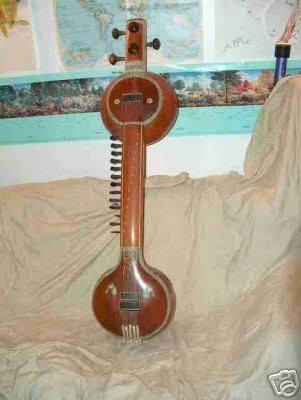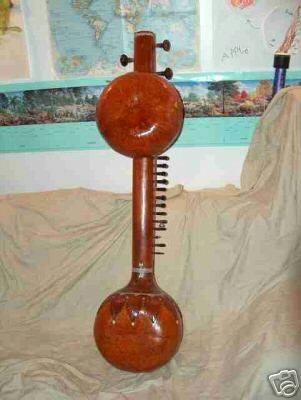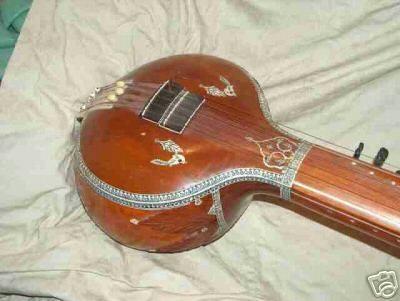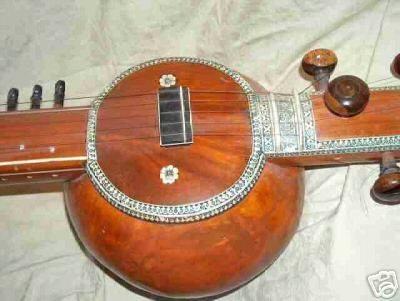Types of present-day tanpuras 2
There have been some interesting developments in tanpura construction and design over the past 25 years. One of India's leading companies in the field of researching into new ways of designing and constructing instruments is Rikhi Ram & sons from Delhi. They invented the instrumental accompanying Tanpuri. This instrument was developed because instrumentalists needed a quieter and smaller instrument to accompany them. Full rich overtones are limited on this instrument due to the short length of the strings and the fact that the manufacturer claims that the thin thread, (jiva), between the string and the bridge is not necessary on this instrument. Although the full-bodied sound is lacking, it has become a very famous and popular tanpura as an accompaniment for instrumental concerts. Its small, flat spoon-like shape, without a gourd or heel, is ideal for transportation as it takes up very little space indeed. Because of its success, other instrument builders are also starting to build similar instruments.
The folding tambura of South India was also developed for the purpose of easy transportation. Basically, it’s a full-sized tambura, but with a hinge midway along the neck. After loosening the strings and the hinge connection, the tanpura can literally be folded in half. The advantage of this instrument is the fact that it keeps its full-sized length permitting complete sound possibilities.
Other developments and experiments with tanpuras have taken place. The Australian Jon Barlow developed a tanpura that has aimed to streamline the total shape of the traditional tanpura. He does this by using the total instrument as the soundbox itself, therefore doing away with the necessity of having a bulky and delicate gourd. At the same time, he designed a system whereby the strings keep their full length, which gives a better quality sound. The total length of the tanpura is shorter than the traditionally designed instrument.
One uncommon type of tanpura I came across, the kinnara, (see photos). It has two gourds, two bridges and some sympathetic strings, all for the purpose of enhancing the volume, resonation and general sound. The same applies to the double-necked tanpura.
 |  |
 |  |
Of course, we should mention the electronic tanpuras. They are widely used and are perfect for practice purposes. I have come across various types, but only a few have a very good sound. However, the electronic tanpuras are practical but lack the sheer beauty and depth of sound of their real acoustic counterparts.
There are many variations of tanpuras to be found. If you know of more, please send photos and information and I can add it to this website.
